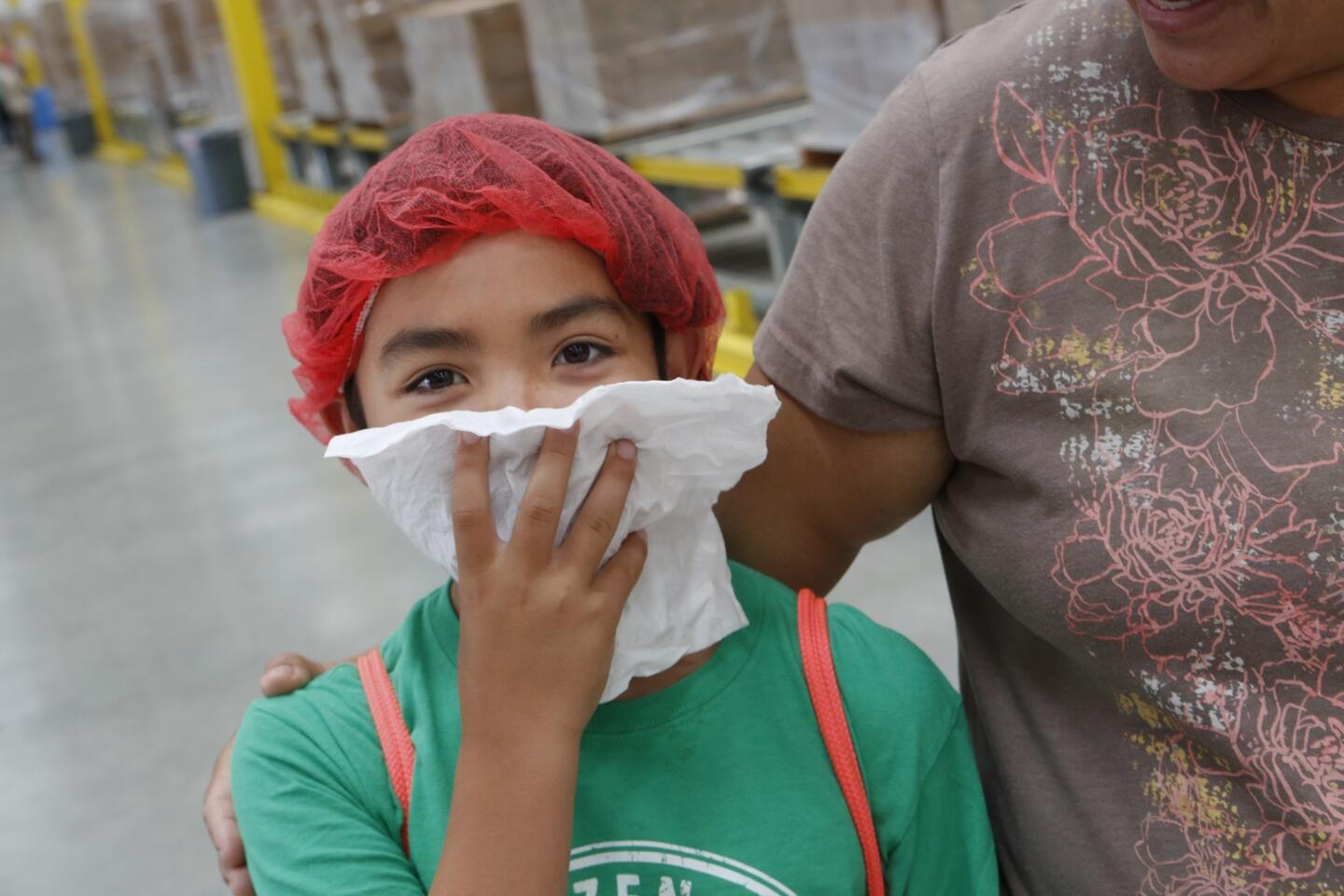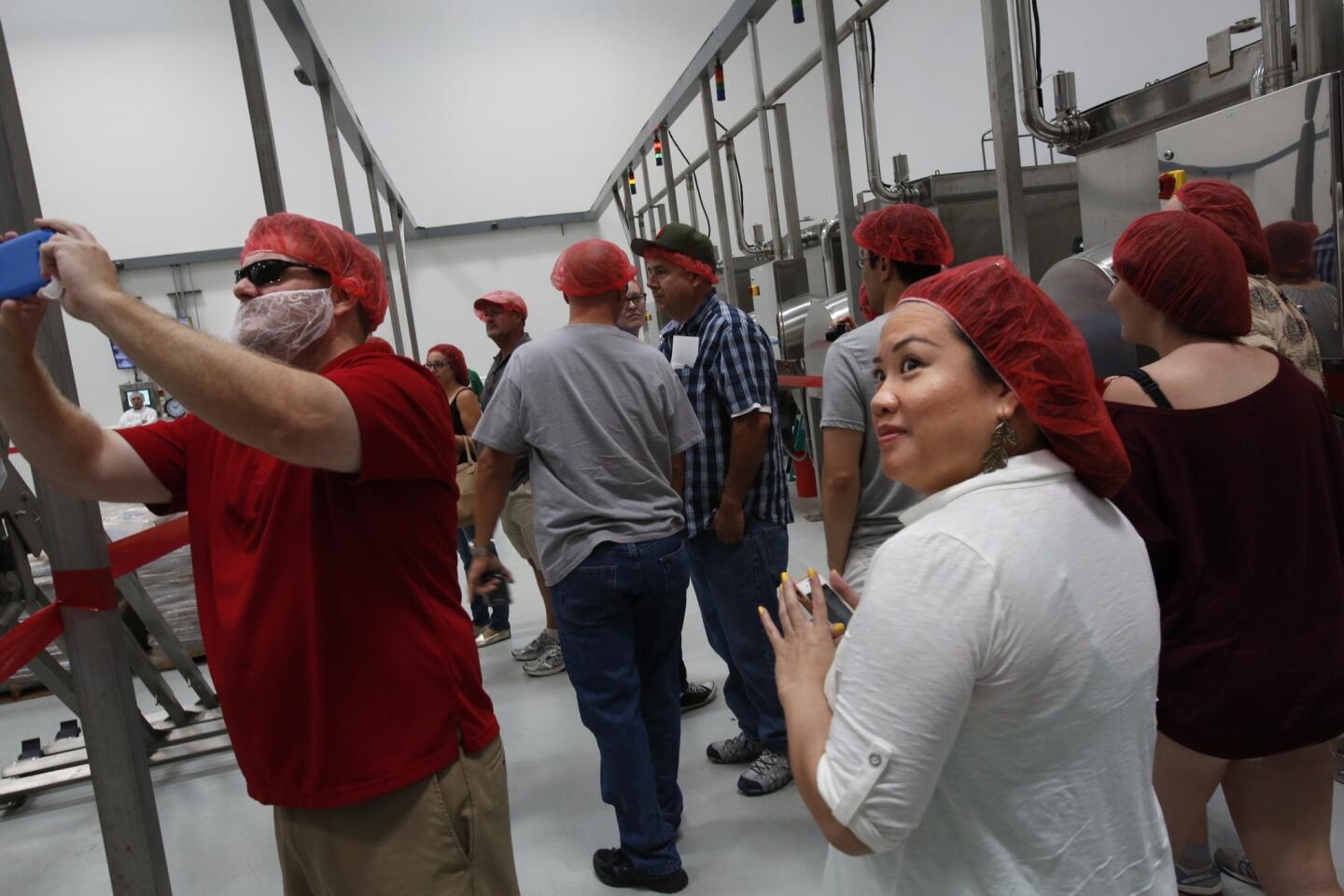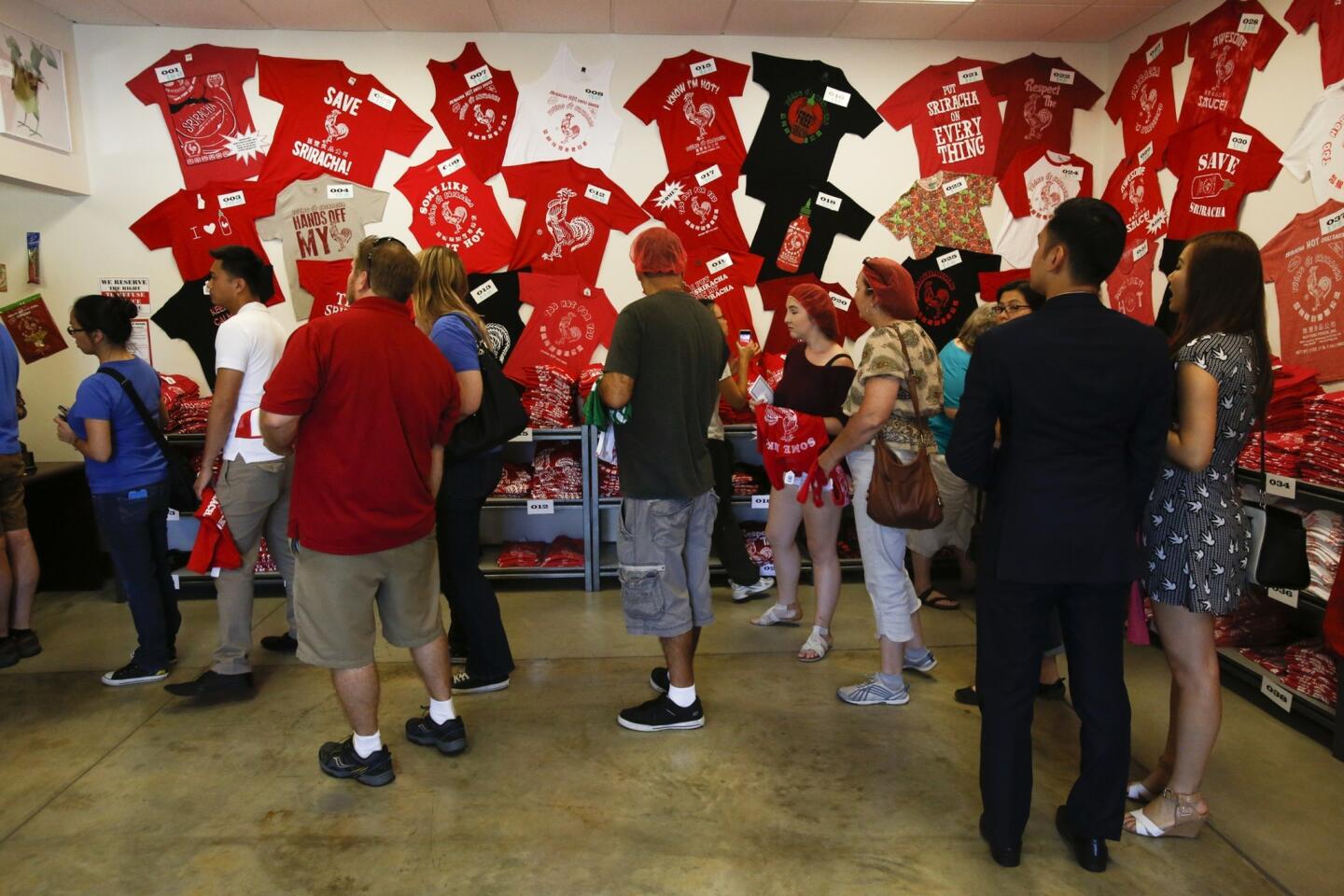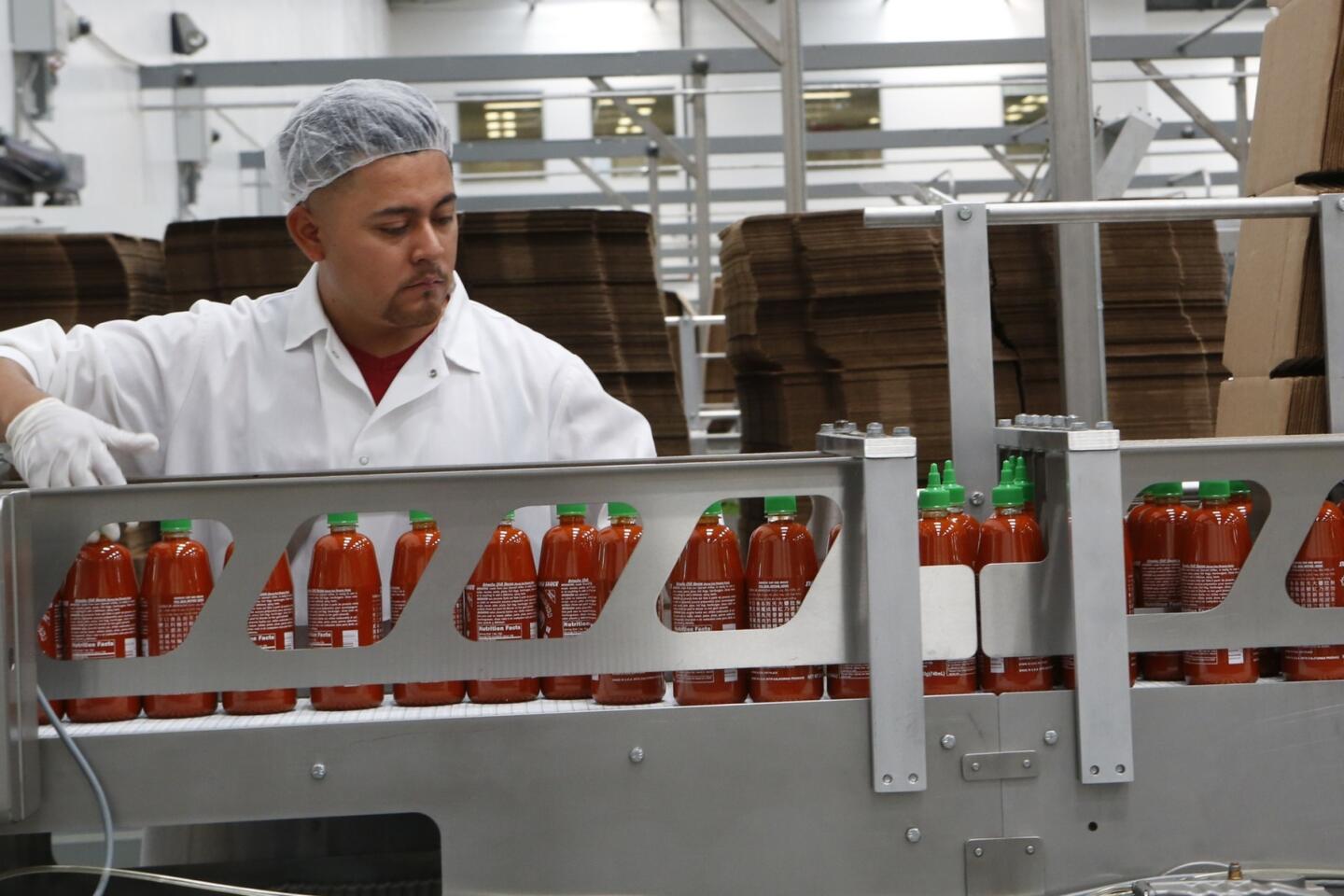‘What’s that smell?’ Carson joins Southern California’s fraternity of stank
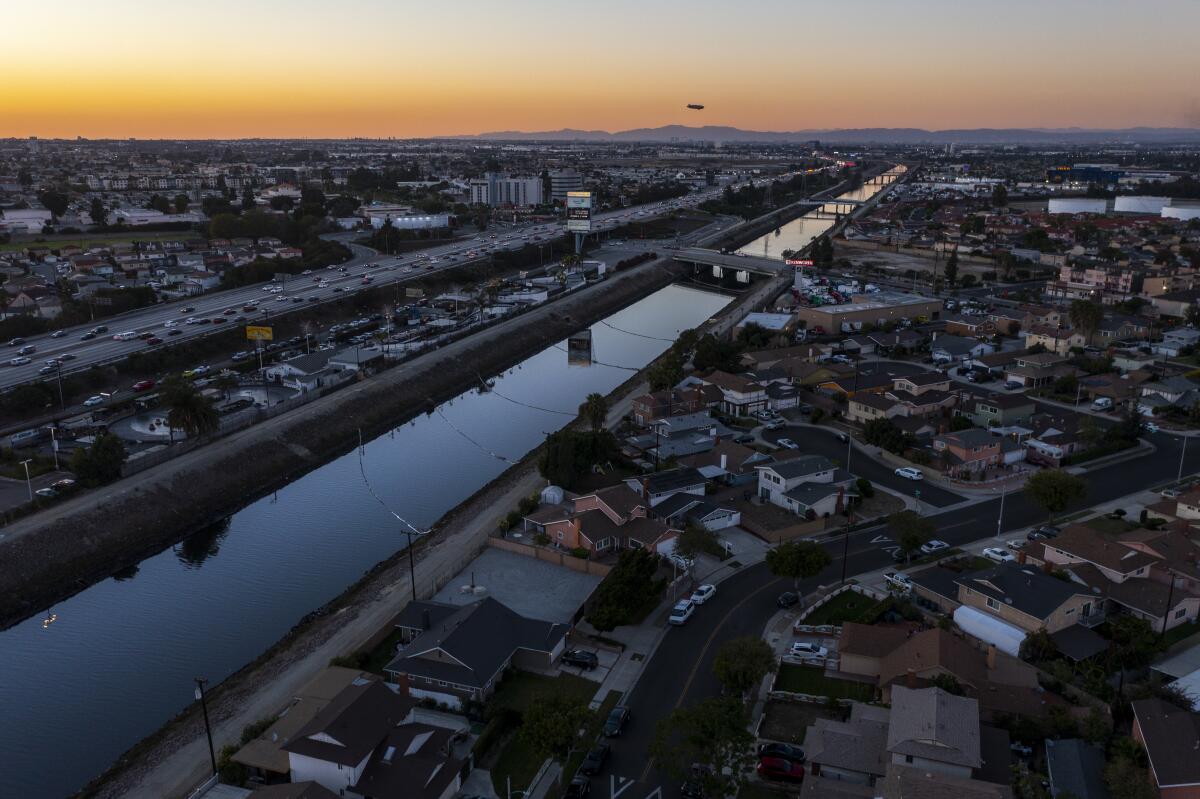
- Share via
Outside Carson City Hall, a small gathering of residents couldn’t quite agree how to describe the stink that has been plaguing their town.
“It’s like a dirty gym sock,” said Jacob Avery, a Carson resident and football coach at Banning High School in Wilmington, chuckling. “I don’t know; it’s like an unclean locker room.”
Resident Sarah Fong popped a menthol cough drop into her mouth to combat what she described as the stench of dead fish and dirty diapers.
Fong playfully pointed to the marketing on the bag of Halls she carried inside her purse that promised “max strength” and “relief” in capital letters.
“If only,” she said. “God, if only.”
The debate after a demonstration last month — a bit of levity amid weeks of sickening odors from the Dominguez Channel — hit at a question that stinky cities throughout Southern California have grappled with for years: “How do we describe an assault on the nostrils?”
Especially when places in Los Angeles and beyond have had nostrils assaulted by all manner of stank.
“We haven’t really developed a good and precise language around smells,” said Emily Friedman, an Auburn University associate English professor who has studied the history and language of smell. “For Western languages, it’s always, ‘this thing smells like rotten eggs or grandma,’ rather than actually describing the smell itself.”
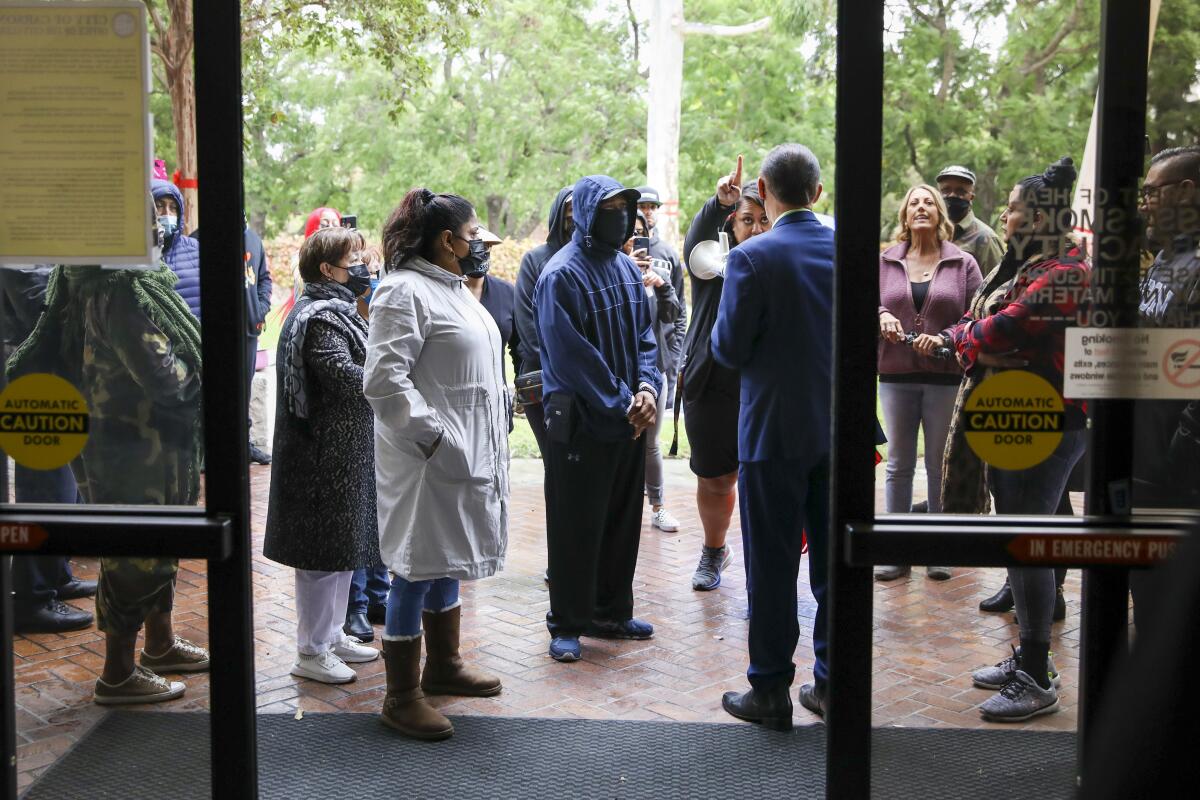
The Carson incident immediately drew comparisons to the “Big Stink” of 2012.
That year, a fish die-off and a surfacing of deep sediment from the Salton Sea, located about 164 miles southeast of Los Angeles, sent hydrogen sulfide stink waves throughout Southern California.
Emergency calls were placed from Santa Clarita to Riverside to Ventura County and Palm Springs.
Then, residents complained of a “sulfur” scent, along with the smells of rotten eggs, rotten mush and body odor.
The most unbelievable aspect, for many, was the distance powerful storm winds blew the smell.
“It’s very unusual that any odor would be this widespread, from the Coachella Valley to Los Angeles County,” Sam Atwood, spokesman for the South Coast Air Quality Management District, said at the time. “We’re talking well over 100 miles. I can’t recall ever confirming an odor traveling that distance.”
At the heart of both stenches was the same culprit: hydrogen sulfide. And on its effect on the olfactory system, there is no debate.
“We all agree that this is a terrible smell,” Carson City Councilmember Jawane Hilton said. “We just can’t agree exactly on what we’re smelling.”

The hydrogen sulfide conjuring the terrible stench in Carson is created from decaying vegetation and marine life stuck in the channel, according to L.A. County officials. What has baffled them is the duration of an event first reported Oct. 3.
Jill Johnston, USC assistant professor of population and public health sciences, studied the gas seven years ago in a wretched setting — gigantic hog manure pits in eastern North Carolina.
“Many of the natural causes of hydrogen sulfide come from anaerobic digestion, which is essentially the decaying of organic material in the absence of oxygen,” Johnston said.
Johnston similarly described the smell of hog-pit hydrogen sulfide as “rotten eggs” and “intense.” She was sympathetic to Carson residents told by county officials that short-term exposure to low levels of hydrogen sulfide is not harmful.
“An exacerbation of asthma can potentially lead people right to the [emergency room],” she said. “We also know it can suppress the immune system.”
Six years earlier, Porter Ranch residents who also suffered from headaches and nausea along with nosebleeds were told the effects were temporary. What followed was the Aliso Canyon leak, the largest methane gas leak in U.S. history, in which 100,000 metric tons of chemicals were released over a nearly four-month period.
In an ironic twist, natural gas was not causing those illnesses. Unlike hydrogen sulfide, methane has no natural smell.
A nontoxic odorant inserted into methane called mercaptan drew “comparisons to rotting cabbage, smelly gym socks or rotten eggs.”
The safety additive can be detected in low concentrations and was so effective at alerting people to the danger of extremely flammable methane that it was making them ill.
“It’s so noxious, people have a physiologic response,” Dr. Cyrus Rangan, director of the Los Angeles County Department of Public Health’s Bureau of Toxicology and Environmental Assessment, said at the time.
Whether hydrogen sulfide or mercaptan, Southern California residents have often used terms like “rotting” or “rotten” to describe funky smells.
Friedman, the Auburn University associate professor, contends, though, that powerful and potent odors don’t always carry negative associations.
Ammonia, which can be toxic at concentrated levels, also provides an adrenaline rush and extra alertness for weightlifters who take a small whiff right before competition, she said.
Today, sulfur is commonly referred to as the scent of rotten eggs. However, Friedman says the scent was valued in some 18th century European circles as the smell of purity and cleanliness because of its connection to mineral baths.
A disagreement in description and connotation played out not long ago in the San Gabriel Valley.
The popularity of Southern California-based Sriracha hot sauce led founding company Huy Fong Foods to move production from its Rosemead factory in 2012 to a new Irwindale plant, due to increased demand.
Within a few months, some residents complained about watery eyes and sore throats.
Offended parties described the odor as “pretty strong” and likened the scent to a blast of “pepper spray.”
Other residents said the smell was “mild, even a little pleasant,” and compared the smell favorably to chili and chorizo.
The odor’s source was a freshly ground blend of hybrid jalapeno peppers used in Sriracha.
Irwindale eventually sued Huy Fong Foods in 2013, claiming the scent was a public nuisance. The city also asked a judge to halt operations.
Lawsuits and countersuits brought by the city and company, respectively, were dropped in 2018. Huy Fong Foods has continued to produce Sriracha unabated since.
While smell descriptions have varied for incidents over the last decade, there may be a simple explanation to link odors produced from seas and channels, gas leaks and hot sauce factories.
“My opinion, based on decades of observation (but not expertise in the area), is that smells happen,” emailed Barbara Belmont, a chemist and lecturer at Cal State Dominguez Hills. “Sometimes it’s from gross pollution, sometimes it’s just nature taking its course. There are going to be stinks to some degree wherever humans and animals are, and sometimes where humans and animals aren’t.”
Times staff writer Hailey Branson-Potts contributed to this report.
More to Read
Sign up for Essential California
The most important California stories and recommendations in your inbox every morning.
You may occasionally receive promotional content from the Los Angeles Times.


